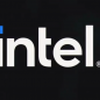For some time, Intel's 13th Generation Core CPUs and accompanying platforms have been known. Raptor Lake-S will boost the amount of energy-efficient Gracemont cores from eight to sixteen. For individuals who do not want to invest in DDR5, Intel will continue to provide DDR4-3200 memory. However.
A slide detailing the specific capabilities of its next-generation Raptor Lake desktop architecture details specifics concerning Intel's 13th Generation Core CPUs. The presentation verifies a few of the many data we've previously published in our Raptor Lake all-you-need-to-know post. Intel presented its 1H 22 NAS workshop in Shenzhen, China, revealing specifics of its NAS strategy. The Raptor Lake-S Platform Overview slide was spotted on Baidu by Twitter user HXL. Intel's 13th Generation Core 'Raptor Lake-S' CPU will have a higher core count than Alder Lake-S by raising the number of energy-efficient Gracemont cores from eight to sixteen. The number of high-performance Raptor Cove cores, on the other hand, will stay at up to eight units. Meanwhile, Intel's next-generation processors will enable DDR5-5600 memory, which will improve single-thread performance. However, for those who do not want to invest in DDR5, Intel will continue to offer DDR4-3200 memory, which is understandable given that Raptor Lake-S will be compatible with Intel's current LGA1700 platforms.
Raptor Lake CPUs will include 16 PCIe 5.0 lanes, four PCIe 4.0 lanes, and eight DMI 4.0 connections for input and output to the chipset. The 16 PCIe Gen5 lanes may be divided in half, providing a PCIe Gen5 x8 connection for the GPU and two PCIe Gen5 x4 connections for the SSDs. As a result, a single Raptor Lake-S CPU may support up to three SSDs that are directly linked to it. It's unclear why Intel opted to preserve the PCIe Gen4 x4 dedicated connection on M.2 SSDs. Still, it might be related to the necessity to continue working with LGA1700 platforms that are only tested for PCIe Gen4 x4. PCIe 3.0/4.0 connections, 2.5GbE (with an external MAC), Wi-Fi 6E CNV, SATA, and USB 3.0 Gen 1/Gen 2/Gen 2x2 interfaces will remain supported by Intel's Raptor Lake-S 700-series chipsets. If PC manufacturers wish to adopt Thunderbolt 4, Intel advises installing their Maple Ridge external controller (USB4-compliant).
Intel's 12th Generation Core "Alder Lake-S" platform introduced a slew of new desktop technologies and capabilities, including a hybrid CPU architecture, DDR5, and PCIe Gen5. The Raptor Lake-S platform is a minor upgrade that brings the total number of PCIe 4.0 lanes on the chipset to 20.
Check that slide below.
Lekaed Intel Raptor Lake Slide Shows DDR5-5600, More PCIe Lanes


